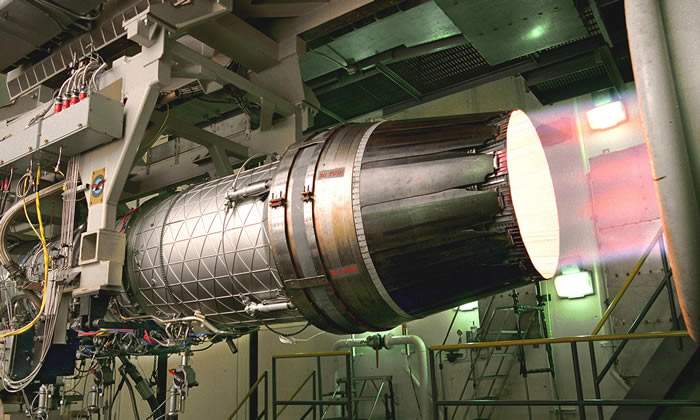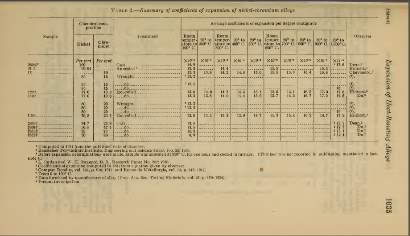
INTRODUCTION
Airplanes have engines that produce the power to go forward. The propulsion system for an aircraft generates the mechanical power for the movement. Lightweight piston engines or gas turbines are aircraft engines. A size of an airplane engine relates to its efficiency. The various types of engines function similarly.
FUNCTION OF THE NOZZLE
The nozzle allows the air to flow out of the engine with extreme power. It is known for its role in creating the thrust. The hot airflow energy and the cold airflow around the engine core creates a force to cause the propulsion. Some nozzles on certain high-speed aircrafts can be located after a mixer which prevents the loud noise of the engine by combining both temperatures.


MATERIAL PROPERTIES OF THE NOZZLE
Nickel steel alloy is the material that most nozzles are produced from. This is due to the high strength which it can maintain through high temperatures. Its high melting point prevents corrosion and a faulty engine. This material also possess’ durability and reliability in bad environments. Various types of nickel alloys are used for example, Duranickels contain high amount of nickel alloys which contain more than 94% of nickel. If heated thermally, a duranickel may develop stronger. On the other side, a broad variety of mechanical characteristics and elevated corrosion resistance can be found in nickel-copper alloys.
They withstand sub-zero temperatures which are free from stress-corrosion cracking when hardened. Also, nickel-chromium superalloys which are known for resistance to corrosion in high temperatures can be strengthened even more adding tungsten and columbium metals. These different alloys are used on nozzles because of high temperatures.

HEAT TREATMENT OF THE NOZZLE
Nickel steel alloys undergo heat treatment procedures to restore stresses. This procedure restores ductility and reduce tensile properties strengthening the material to its original state or maybe stronger. The types of heat treatment are used depending on the design. Stress equalization is performed at reduced temperatures to balance stress with reduced mechanical strength in cold worked material.
Annealing occurs when an alloy heats up to 1300°F-2200°F. The temperature will be maintained for a while, followed by refrigeration. Annealing eliminates any material stress, decreases tensile strength and enhances ductility. Solution annealing is a high temperature anneal only for some alloys. Age hardening uses heat between 800°F-1600°F to change the solubility of an alloy. Alloys must remain in high temperatures for a long period of time for this procedure.

THERMAL PROPERTIES OF THE NOZZLE
Nickel steel alloys were tested for thermal properties and discovered they expand during heat absorption like other materials. Even though they are intended to withstand heat due to their high melting points, they will expand from heat generated around 20°C to 1,000°C.

EFFECTS OF WEATHER
Alloys are not affected by weather as its properties can avoid corrosion and erosion. They are tough at temperatures below zero which the material gets hardened makes it free of stress-corrosion cracking. The materials are all tested under extreme weather conditions and heat treated before placing around the actual airplane engine. The nozzle is one of the hottest parts of the engine while running, which can prevent it from freezing up at low temperatures keeping the engine functional.

MANUFACTURING PROCCESS
Firstly, annealing is used to manufacture nickel steel alloy and other similar alloys. Melt the base alloys for eight to twelve hours at 3000°F in a furnace. The molten steel should be annealed in a controlled sequence by quickly cooling and heating. Once done, it should be heated for four hours a further 1,000°F, then cooled for two hours at 35°F with water. Let the material cool for four hours in the air.
Get Help With Your Essay
If you need assistance with writing your essay, our professional essay writing service is here to help!
The steel must be immersed in a bath of hydrofluoric acid. Repeat the method for Annealing. The steel should be heated at 3,000 ° F for eight hours afterwards. Pour the molten incomplete steel into casts, blooms, billets and plates, cast it into moulds and let it cool down for four hours. Moreover, the steel blooms, billets and slabs cool down to 200 ° F through a fast-moving conveyor belt. Alternate between cooling and pushing through a sequence of rollers in the air. Roll blooms, billets and slabs through heated rollers to cut off the ends and burn off defects. Roll the blooms in the steel bar, the billets in the wire, the strips and slabs in the steel and steel sheet. Roll the steel through hot presses to a dull finish or send it through a series of hot and cold presses to a polished finish.
Cut the steel to the item and tolerances of the end user and split it into orders. The steel will be further processed by other production plants and the end products will be produced. Use industrial shears for cutting steel wire, sheet steel and strips, and use industrial steel bar saws. Cut through steel plate with industrial plasma torches or ionized gas torches. Cut down the final product of rail shipping, so the steel weighs anywhere from a few hundred lbs. Whether sheeting of steel, steel wire, plate of steel or bar of steel, up to 40 tonnes.
ENVIRONMENTAL IMPACT
The aquatic environment only gets affected by nickel because it is classified as a heavy metal. It does not affect the local environment immediately. Even though the nickel does not affect the fish or animals it can affect the water quality by being in the soil or base of the river or sea.

POSSIBLE NEW MATERIALS
Smart materials such as shape memory alloys can switch with specific triggers such as extremely hot temperatures from one shape to another which can also be a downside as its form can be changed. Economic high-temperature memory alloys used to work at temperatures up to about 400°C.
CONCLUSION
All together I think nickel steel alloy is the best material to be used for the nozzle as it goes through high temperatures and does not get damaged. Even though it does not affect the environment as much as other material it can be safe to use. Manufacturing wise it is complicated to produce due to the circumstances of the time that needs to be spent for the material to heat and cool. And even more it can withstand harsh weather preventing the engine from being faulty.
BIBLIOGRAPHY
- General Electric GEnx
En.wikipedia.org
- Engines
Grc.nasa.gov
https://www.grc.nasa.gov/www/k-12/UEET/StudentSite/engines.html
- Properties of Nickel Alloys
Nickel-alloys.net
https://www.nickel-alloys.net/nickel_alloy_properties.html
- HEAT TREATING NICKEL ALLOYS
Corrosion Materials
http://www.corrosionmaterials.com/heat-treating-nickel-alloys/
- Nvlpubs.nist.gov
https://nvlpubs.nist.gov/nistpubs/jres/7/jresv7n6p1031_a2b.pdf
- Sciencing.com
https://sciencing.com/alloy-steel-manufacturing-process-7267414.html
- Pollutant Fact Sheet
Apps.sepa.org.uk
http://apps.sepa.org.uk/spripa/Pages/SubstanceInformation.aspx?pid=108
- New Smart Material Could Improve Jet Engines, Reduce Noise
Research & Development
https://www.rdmag.com/article/2018/09/new-smart-material-could-improve-jet-engines-reduce-noise
Cite This Work
To export a reference to this article please select a referencing style below:


